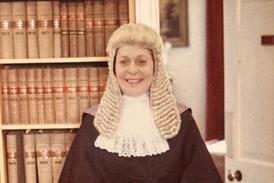Environmental health – Buildings – Burials and cremation – Religions
R (on the application of Ghai) (appellant) v Newcastle City Council and Others (respondent) and Secretary of State for Justice (interested party) and (1) Ramgharia Gurdwara, Hitchin (2) Alice Barker Welfare and Wildlife Trust (3) Equality and Human Rights Commission (4) Hindu Merchants Association (interveners): CA (Civ Div) (Lord Neuberger of Abbotsbury, master of the rolls, Lords Justice Moore-Bick, Etherton): 10 February 2010
The appellant orthodox Hindu (G) appealed against the dismissal (Ghai v Newcastle City Council [2009] EWHC 978 (Admin), Times, 18 May 2009) of his claim for judicial review of the decision of the respondent local authority that it would not provide land dedicated for traditional open-air funeral pyres.
G, in accordance with his religion, wished to be cremated on a fire in the open air after his death. He had asked the local authority to provide land outside the city for that purpose. It refused, claiming that such a cremation would be contrary to the Cremation (England and Wales) Regulations 2008, made under the Cremation Act 1902, which required that cremations took place inside a building. In his claim for judicial review G accepted that an open-air cremation would be precluded by law, but argued that the law amounted to an impermissible interference with his right to manifest his religion or belief under article 9 of the European Convention on Human Rights 1950. The court accepted that there was an interference with his right, but held that it was justified. On the instant appeal fresh evidence showed that G’s religious belief would be satisfied if the cremation took place within a structure, provided that the cremation was by traditional fire, and that sunlight could shine directly on his body while it was being cremated. That called into question the common assumption in the judicial review that G’s wishes would necessarily infringe the legislation. The issue was therefore whether a cremation that would accord with G’s beliefs could reasonably be achieved in a structure that was a ‘building’ within the meaning in section 2 of the 1902 act. The interested party secretary of state contended that a structure could only be a ‘building’ within the act if it was an ‘inclosure of brick or stonework, covered in by a roof’. He submitted that that definition was supported firstly by the view expressed in Moir v Williams [1892] 1 QB 264 CA; secondly, by the desirability of a clear and simple meaning for the word, as breach of the act would be a criminal offence; and thirdly, by the need to ensure that cremations could not be seen by the general public.
Held: (1) The evidence of certain structures in other countries in which Hindu cremations were performed, any of which would accord with G’s beliefs, showed that they were generally substantial in their extent, solid in structure, and relatively permanent in nature. They all had a solid roof, supported on columns and without walls, or with just low walls or balustrades. The word ‘building’ was used in ordinary language and had no established special, legal or technical meaning, and was not defined in the act. Therefore its ordinary meaning was a good starting point. The obiter view in Moir that the ordinary meaning of ‘building’ was ‘an inclosure of brick or stonework, covered in by a roof’ could only be justified in the context of that case; it did not have wider application, Moir considered. There were many wooden or other structures not made of brick or stonework, and many structures that were not ‘inclosures’, all of which were ‘buildings’ in the normal use of the word. To decide what a word meant in a particular context, it was appropriate to take its more natural, wider meaning, and then consider whether, and if so to what extent, that meaning was cut down by the context.
(2) The secretary of state’s argument that breach of the act could lead to prosecution supported a wide, rather than narrow, meaning for the word ‘building’. However, no assistance was to be derived from the fact that breach of the act was an offence.
(3) The decision in R v Price [1883-84] LR 12 QBD 247 QBD, which might have triggered the passing of the act, and the purpose of the unenacted Disposal of the Dead (Regulations) Bill 1884, were not enough to establish that one of the purposes of the act was to ensure that cremations were performed so as to be invisible to the public, R v Price considered. If that had been one of its purposes, the court would have expected to find such a statement or provision to that effect, and it would have been easy to say so, either in the long title to the act or in a provision. Section 5 directly addressed the issue of the proximity of cremations to dwellings and highways and, if it was intended to address the issue of the privacy of a cremation, it represented the limit of the protection the legislature thought it right to provide. It would not be right to imply a specific requirement, precluding public visibility, into the act, which could achieve its stated aim and work effectively without it. Even if one of the purposes of the act was to ensure that cremations were performed away from public view, that would not be enough to justify giving the word ‘building’ the narrow meaning for which the secretary of state contended. It would be perfectly possible to carry out a cremation away from public gaze in a building with substantial openings in the walls. The act envisaged that crematoria would be ‘constructed’. Provided it was relatively permanent and substantial, so that it could properly be said to have been ‘constructed’, and provided it could normally be so described, a structure would be a ‘building’ within the act. Therefore there was no reason not to give the word ‘building’ its natural and relatively wide meaning in section 2. Accordingly, G’s wishes as to how his remains were to be cremated could be accommodated under the act and the regulations.
Judgment accordingly.
Ramby de Mello, Tony Muman (instructed by J M Wilson) for the appellant; John McGuinness QC (instructed by in-house solicitor) for the respondent; Jonathan Swift, Joanne Clement (instructed by Treasury Solicitor) for the interested party; Satvinder Juss (pro bono) for the first intervener; Richard Drabble QC, Eric Fripp, Ellis Wilford (instructed by Simons Muirhead & Burton) for the second intervener; Helen Mountfield (instructed by in-house solicitor) for the third intervener; Adrian Berry (pro bono) (instructed by Wilson Barca) for the fourth intervener.



























No comments yet